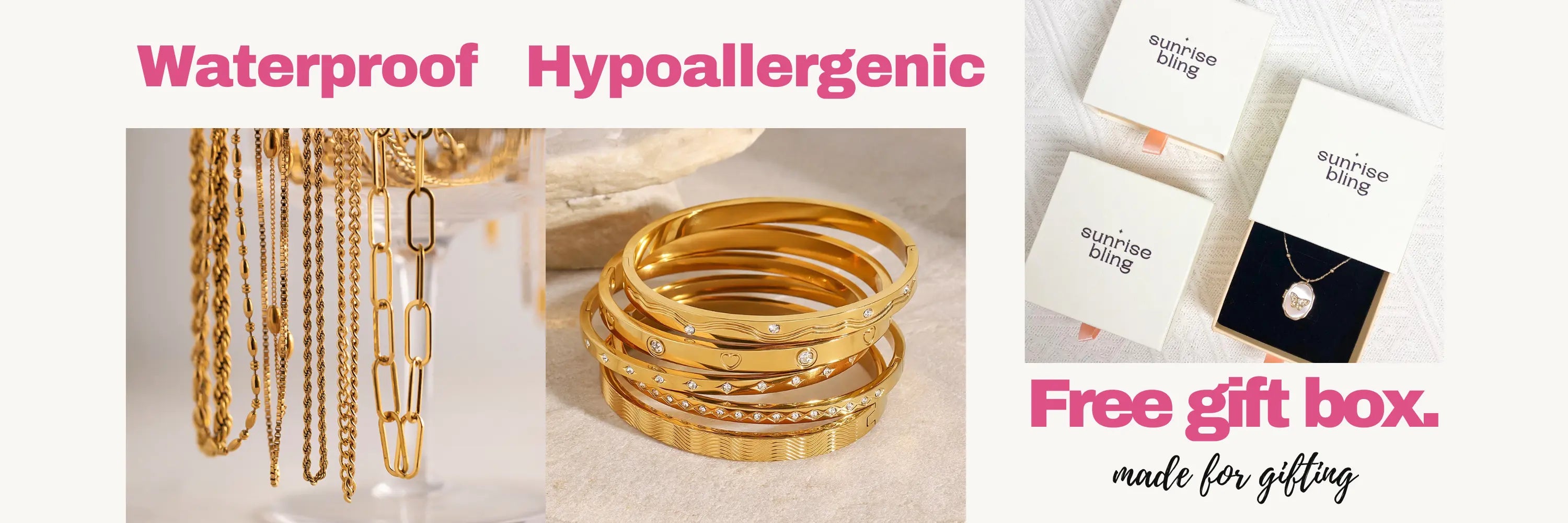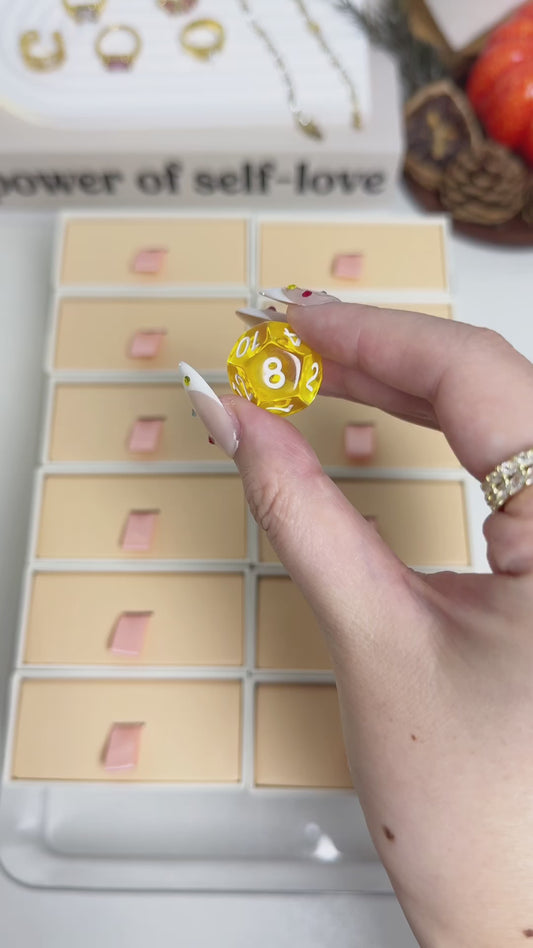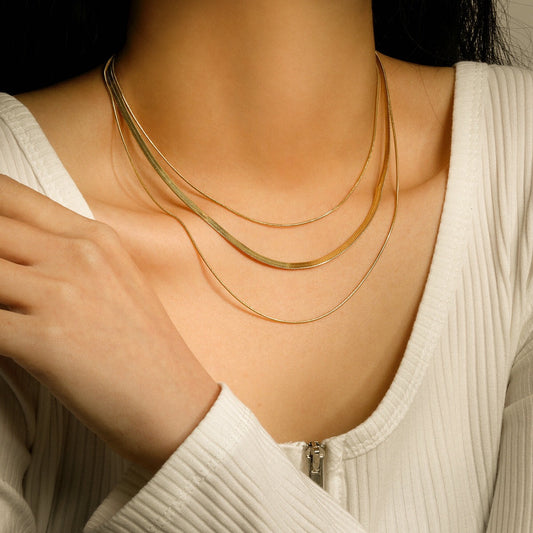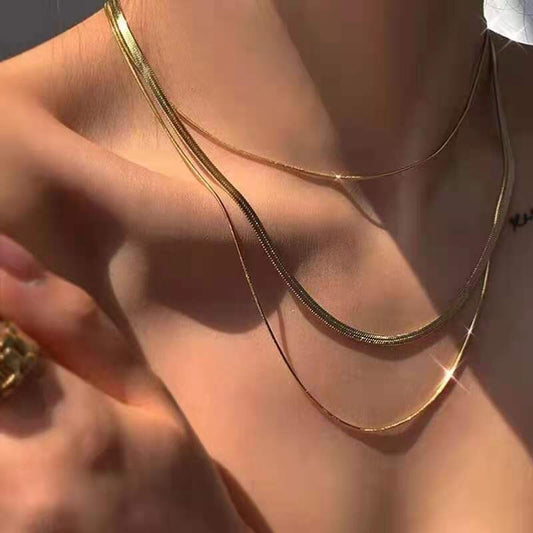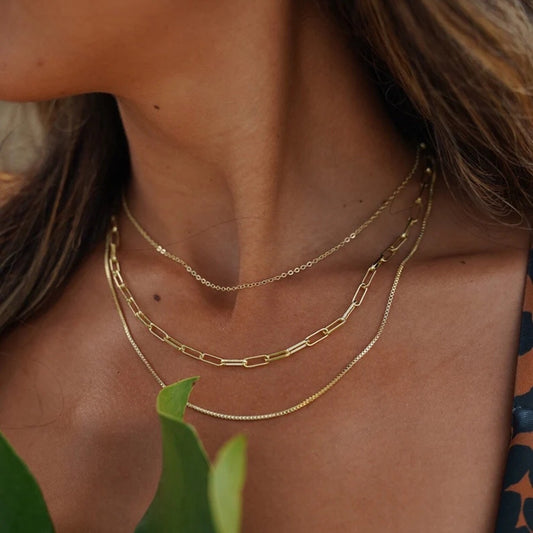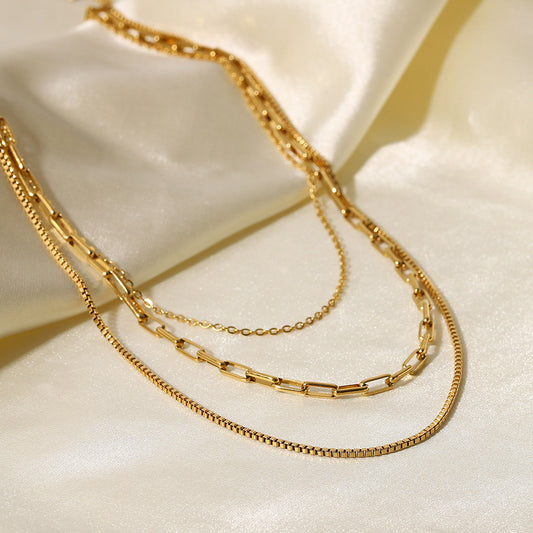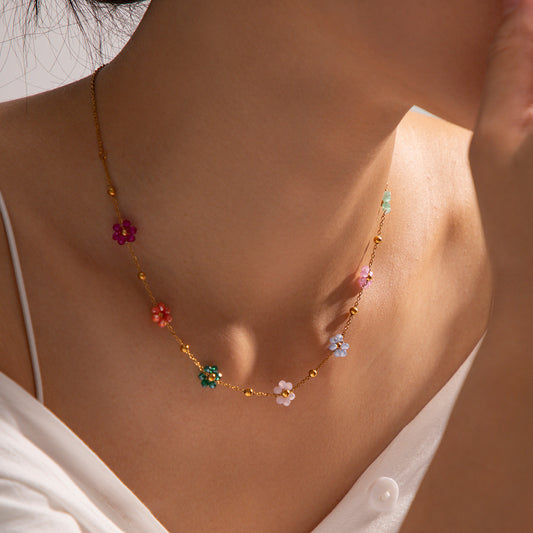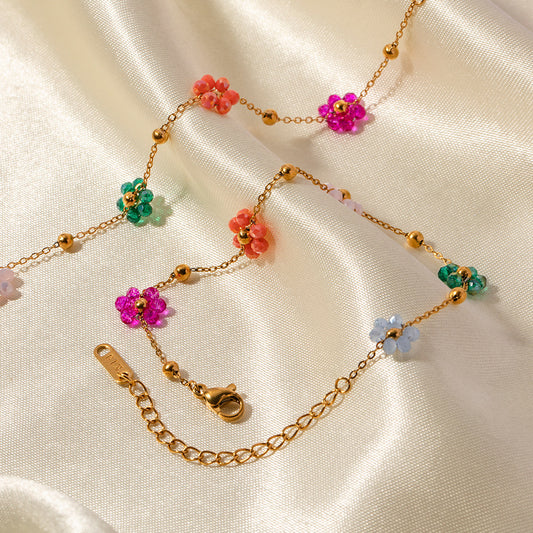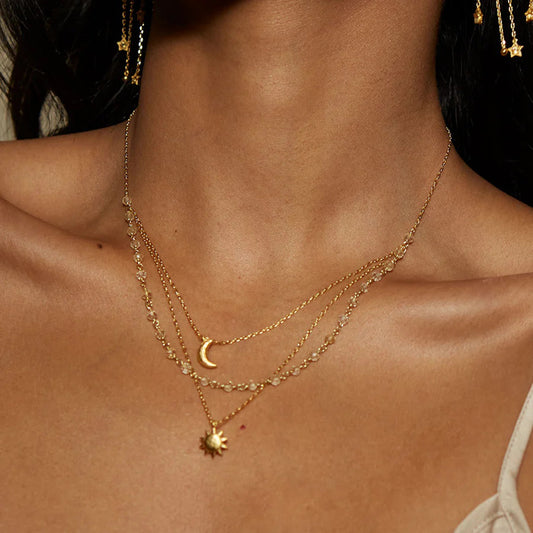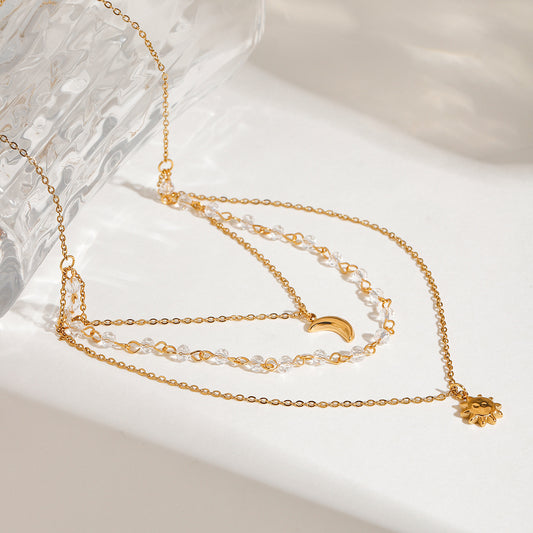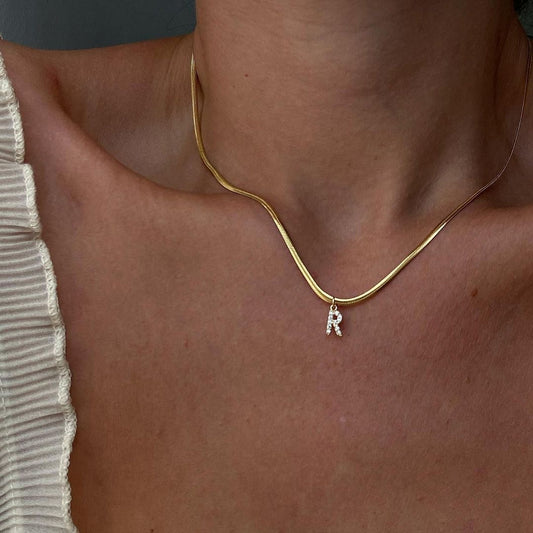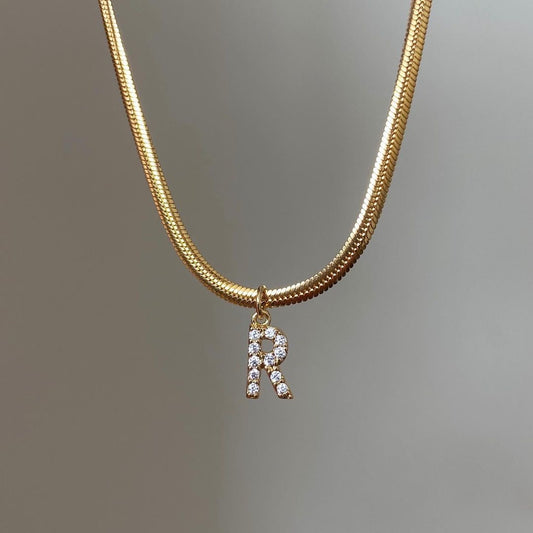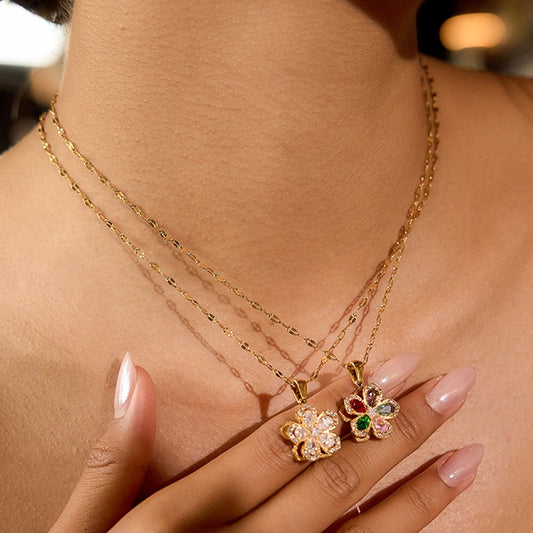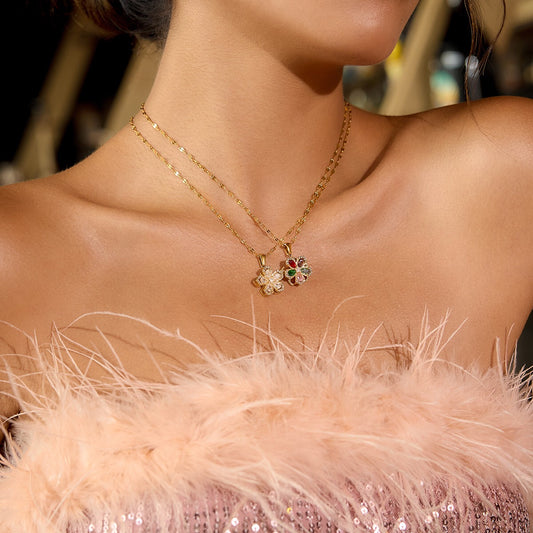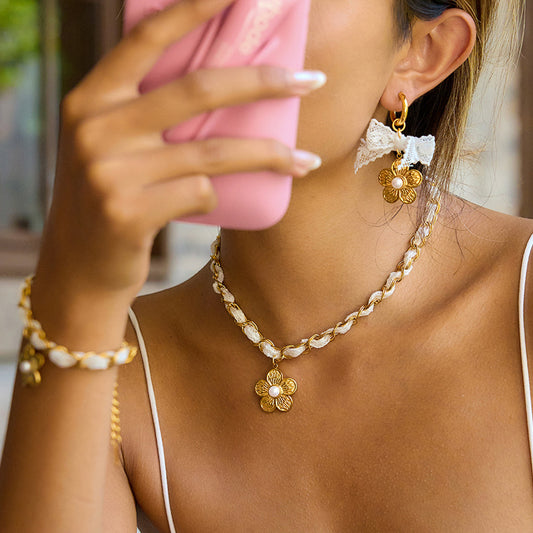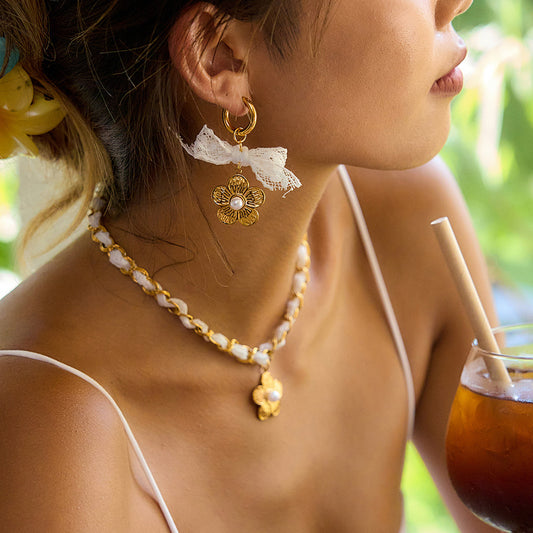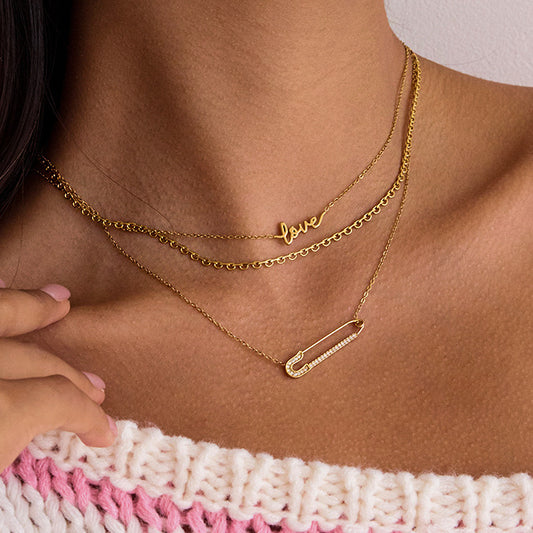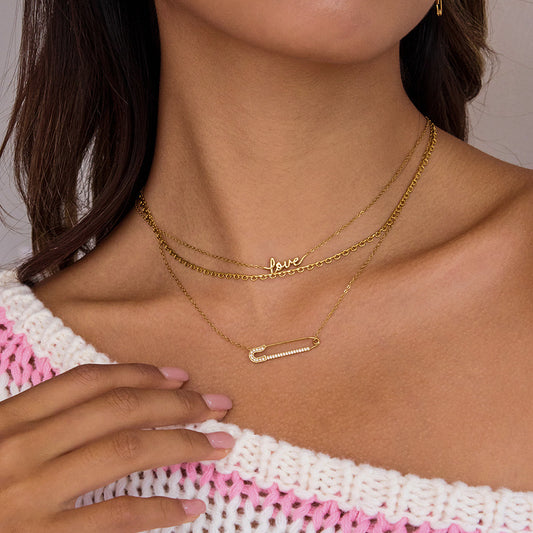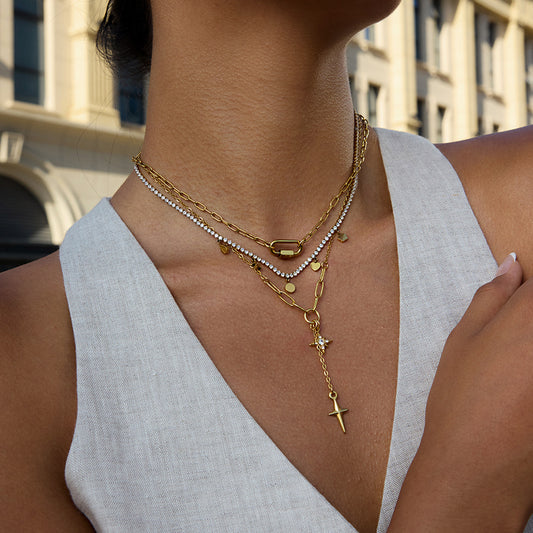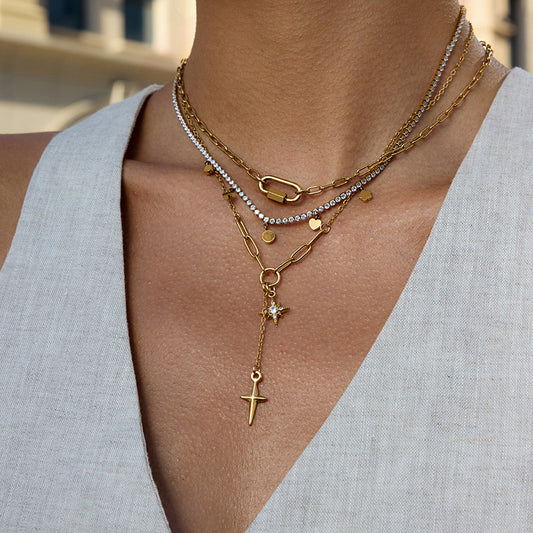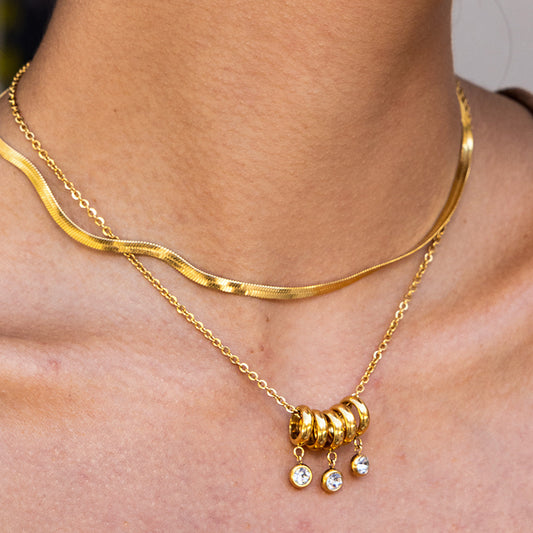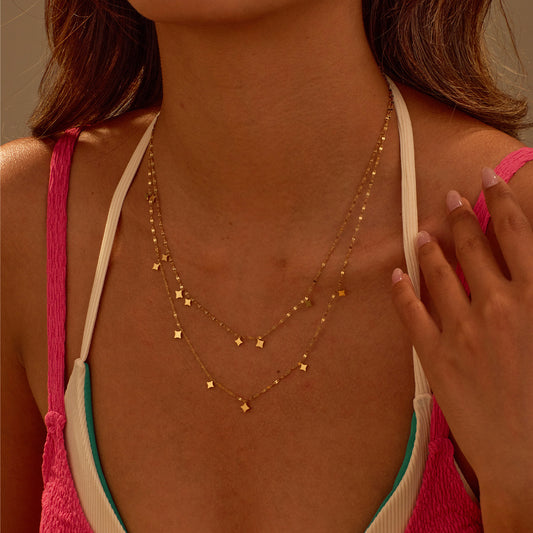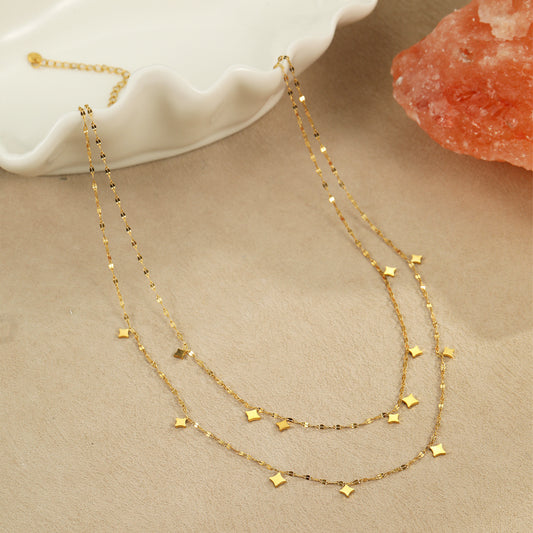10k vs 14k Gold is a top consideration for anyone shopping for durable, everyday jewelry—and for good reason. In 2024, the global luxury jewelry market amounted to about 31 billion euros. The debate boils down to a simple question: which balance of purity, durability, and style works best for your busy life? 10k gold offers unbeatable toughness (ideal for workouts, cooking, or commuting), while 14k gold delivers a richer, warmer shine that elevates casual and dressy looks alike. Whether you’re hunting for a necklace you can sleep in or a ring that won’t scratch at the office, understanding the differences between 10k and 14k gold is key to picking a piece that lasts. Let’s break down what each gold type is, why they’re so popular, and how to choose the right one for daily wear (or gifting to your girlfriend).
What is 10k vs 14k Gold
Core Definition: Purity and Composition
The primary difference between 10k and 14k gold lies in their gold purity—measured by “karats” (abbreviated “k”), which represent the proportion of pure gold in the alloy:
-
10k Gold:
-
Purity: 41.7% pure gold (10 parts gold out of 24 total parts).
-
Alloy Metals: 58.3% mix of copper, zinc, and sometimes nickel. These metals strengthen the gold, making it resistant to bending, scratching, and tarnishing.
-
Color Tone: Has a slightly paler, more muted gold hue (the alloy metals dilute the pure gold’s warmth). Some 10k gold may have subtle pink or yellow undertones depending on the alloy mix.
-
14k Gold:
-
Purity: 58.3% pure gold (14 parts gold out of 24 total parts).
-
Alloy Metals: 41.7% mix of copper, zinc, or silver (nickel is less common, making it more hypoallergenic).
-
Color Tone: Boasts a richer, more classic gold glow—closer to the warm hue most people associate with “real gold.” It’s vibrant enough to stand out but not overly flashy for daily wear.

Key Physical Differences (Critical for Daily Wear)
Beyond purity, 10k and 14k gold have distinct traits that impact how they perform in everyday life:
-
Durability:
-
10k Gold: Harder (Mohs hardness 3.5–4) and more scratch-resistant. Its high alloy content makes it ideal for jewelry you never take off—like wedding bands, everyday necklaces, or bracelets that get bumped against bags or desks.
-
14k Gold: Slightly softer (Mohs hardness 3–3.5) but still durable for daily wear. It may show minor scratches over time (especially on rings), but these are easy to polish out by a jeweler.
-
Weight:
-
10k Gold: Denser due to alloy metals—feels slightly heavier than 14k gold of the same size. For example, a 10k gold hoop earring (20mm) weighs ~5 grams, while a 14k gold one of the same size weighs ~4.5 grams.
-
14k Gold: Lighter and more comfortable for all-day wear (e.g., delicate necklaces or studs that sit on the earlobe).
-
Hypoallergenic Properties:
-
10k Gold: More likely to contain nickel (a common allergen) in its alloy. If you have sensitive skin, opt for “nickel-free 10k gold” (look for this label when shopping).
-
14k Gold: Rarely contains nickel (alloy metals are usually copper or silver), making it hypoallergenic for 95% of people with sensitive skin.
How to Identify 10k vs 14k Gold (Avoid Fakes)
When shopping for daily wear jewelry, ensure you’re getting genuine 10k or 14k gold with these markers:
-
Hallmarks: Look for a “10k” or “14k” stamp (often paired with “GF” for gold-filled, but avoid “GP” for gold-plated, which wears off quickly). Stamps are usually on the inside of rings, back of pendants, or closure of bracelets.
-
Color Consistency: Genuine 10k gold has a uniform pale hue; 14k gold has a consistent warm tone. Fake gold (plated or alloy) may have splotchy color or fade near edges.
-
Price Check: 14k gold jewelry costs 30–50% more than 10k gold of the same design. If a “14k gold” necklace is priced the same as a 10k one, it’s likely fake.

Why is 10k vs 14k Gold so popular
“Best for Daily Wear” – Durability Meets Practicality
Both 10k and 14k gold dominate the market because they’re built for real, busy lives—unlike 18k or 24k gold (too soft for daily use):
-
10k Gold’s Appeal: Its unmatched durability makes it a favorite for active lifestyles. Gym-goers, parents, and people with manual jobs love it because it won’t scratch, bend, or tarnish when exposed to sweat, water, or rough surfaces. It’s also budget-friendly, so you can own multiple pieces (e.g., a ring, necklace, and earrings) without overspending.
-
14k Gold’s Appeal: It strikes the perfect balance between durability and beauty. The richer gold tone elevates casual outfits (jeans + tee) while still being tough enough for daily wear. It’s the go-to choice for people who want “real gold” shine without the high cost of 18k gold.
-
Low Maintenance: Both 10k and 14k gold require minimal care—just a quick wipe with a cloth to remove dirt. Unlike silver (which tarnishes) or gold-plated jewelry (which peels), they retain their look for years with basic upkeep.
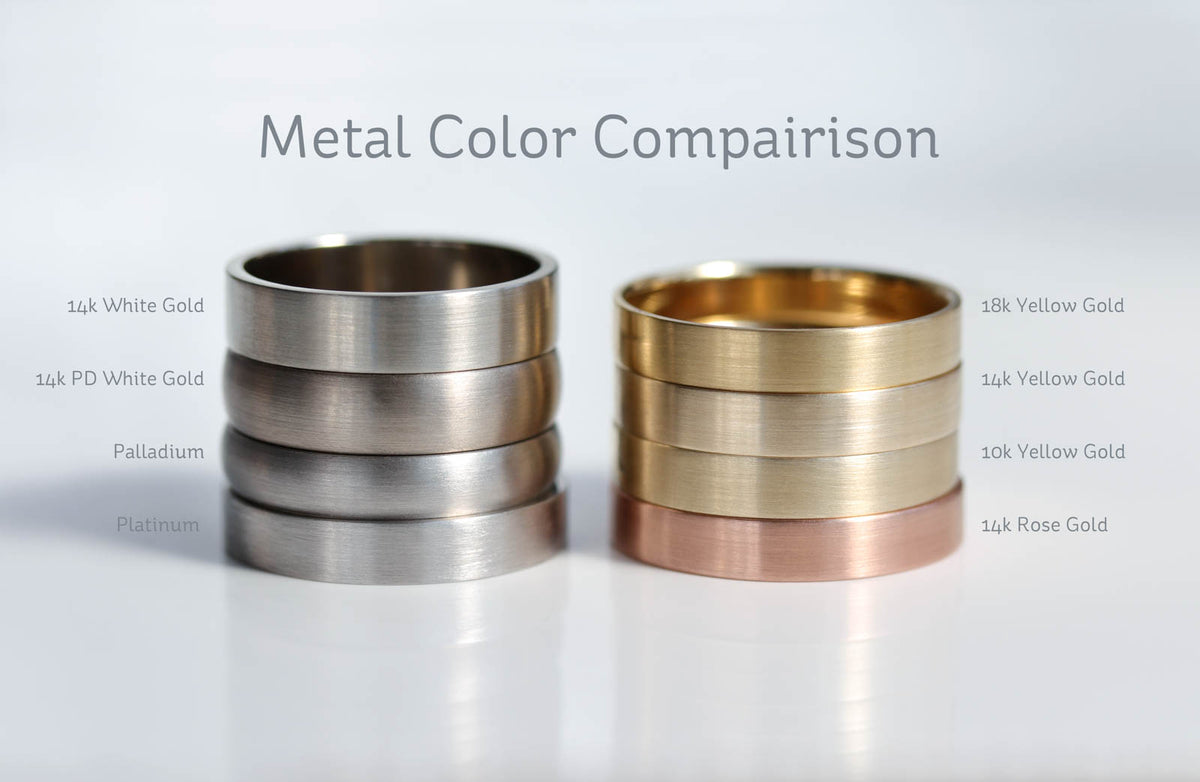
Versatile Style for Every Occasion
10k and 14k gold work for every moment—from morning coffee runs to evening dinners—making them versatile additions to any jewelry collection:
-
Casual Wear: 10k gold’s muted tone pairs perfectly with loungewear, leggings, or graphic tees (it doesn’t compete with bold patterns). 14k gold adds a touch of polish to casual outfits—think a 14k gold pendant with a hoodie or 14k gold studs with a denim jacket.
-
Work/Professional: Both are office-appropriate—10k gold’s understated look fits conservative dress codes, while 14k gold’s warm glow adds subtle elegance to blazers or button-downs.
-
Special Occasions: 14k gold shines at date nights or birthdays (pair a 14k gold necklace with a dress), while 10k gold works for low-key celebrations (a 10k gold bracelet with a midi skirt).

Affordable Luxury
10k and 14k gold offer the look of fine jewelry without the luxury price tag:
-
10k Gold: Budget-friendly—most pieces cost \(50–\)200 (e.g., a 10k gold ring: \(80–\)150; a 10k gold necklace: \(60–\)120). Perfect for beginners or anyone on a budget.
-
14k Gold: Mid-range—pieces cost \(100–\)400 (e.g., a 14k gold hoop earring: \(120–\)250; a 14k gold bracelet: \(150–\)300). It’s an investment that feels luxurious but won’t break the bank.
-
Long-Term Value: Unlike fashion jewelry (discarded after 6 months), 10k and 14k gold retain their value. You can sell them later for 30–50% of their original price (based on gold market rates) or pass them down as heirlooms.
Popular styles of 10k vs 14k Gold jewelry
10k Gold Jewelry Styles (Durable Daily Picks)
10k gold’s toughness makes it ideal for jewelry that takes a beating:
-
10k Gold Wedding Band: A simple, flat band (2–3mm width) with a matte or polished finish. It’s scratch-resistant, so it holds up to daily handwashing, cooking, or typing. Prices: \(80–\)180.
-
10k Gold Minimalist Necklace: A thin cable chain (16–18 inches) with a small pendant (initial, tiny heart, or birthstone). The lightweight design is comfortable for 24/7 wear, and the 10k gold won’t tarnish from sweat. Prices: \(60–\)120.
-
10k Gold Huggie Earrings: Small, tight-fitting hoops (10–15mm) with a secure latch back. They won’t get caught on hair or clothing, making them perfect for workouts or busy mornings. Prices: \(50–\)100.
14k Gold Jewelry Styles (Shiny Daily Elegance)
14k gold’s warm glow shines in styles that balance beauty and practicality:
-
14k Gold Hoop Earrings: Medium-sized hoops (18–25mm) with a polished finish. The classic design works with jeans, dresses, or blazers—ideal for days when you want to look put-together without effort. Prices: \(120–\)250.
-
14k Gold Layered Necklace: A delicate chain (16 inches) with a small pendant (e.g., a tiny diamond or pearl) paired with a longer chain (18 inches) with a minimalist charm. The layered look adds depth to casual outfits, and the 14k gold’s shine stands out. Prices: \(150–\)300.
-
14k Gold Tennis Bracelet: A line of small 14k gold links (2–3mm width) with a secure clasp. It’s lightweight enough for daily wear and adds subtle sparkle to wrists—perfect for work or brunch. Prices: \(180–\)400.
Style Comparisons: When to Choose 10k vs 14k Gold
-
Choose 10k Gold If: You want jewelry for high-impact activities (gym, gardening), prefer understated style, or are on a budget.
-
Choose 14k Gold If: You want richer gold shine, plan to wear the piece for special occasions and daily, or have sensitive skin (opting for nickel-free 14k).
How to wear 10k vs 14k Gold jewelry
Pairing with Outfits (By Occasion)
-
Everyday Casual:
-
10k Gold: High-waisted black leggings + oversized gray hoodie + white sneakers + 10k gold huggie earrings + 10k gold initial necklace. The muted gold adds subtle personality without overcomplicating the loungewear.
-
14k Gold: Light blue jeans + white cropped tee + brown ankle boots + 14k gold hoop earrings (20mm) + 14k gold thin bracelet. The warm gold elevates the casual look, making it feel intentional.
-
Work/Professional:
-
10k Gold: Navy blazer + light blue button-down + tailored khakis + 10k gold minimalist studs + 10k gold wedding band. The low-profile 10k gold feels professional and won’t distract during meetings.
-
14k Gold: Black blazer + white turtleneck + black trousers + 14k gold layered necklace (small pendant + charm) + 14k gold small hoop earrings. The 14k gold’s glow adds elegance to the professional outfit.
-
Date Night:
-
10k Gold: Black midi dress + strappy black heels + 10k gold pendant necklace (with a small CZ) + 10k gold thin bracelet. The 10k gold’s subtle shine complements the dress without competing for attention.
-
14k Gold: Red slip dress + gold heels + 14k gold drop earrings (with pearl accents) + 14k gold statement ring. The 14k gold’s warm tone pairs beautifully with red, creating a romantic look.
Styling for Different Lifestyles
-
Active Lifestyle (Gym, Hiking):
-
Stick to 10k gold: Small huggie earrings, a thin necklace (tucked under clothing), or a wedding band. Avoid 14k gold (softer, more prone to scratches from equipment).
-
Busy Mom/Parent:
-
10k or 14k gold: Choose pieces that won’t get caught on kids’ clothing or toys—stud earrings, a short necklace, or a bracelet with a secure clasp. 10k is better for messy activities (e.g., baking), while 14k works for school drop-offs or playdates.
-
Office Professional:
-
14k gold is ideal: Layered necklaces, small hoops, or a tennis bracelet. The richer shine feels polished, and it transitions easily to after-work happy hours. 10k gold works for conservative offices (e.g., law, finance) where understated style is preferred.
Tips for Mixing 10k and 14k Gold Jewelry
Mixing 10k and 14k gold is trendy—follow these rules to keep the look cohesive:
-
Stick to 2–3 Pieces Total: Mix one 10k and one 14k gold piece (e.g., 10k gold necklace + 14k gold earrings). Too many pieces (4+) look cluttered.
-
Balance Tones: Let one metal dominate. For example, if you wear a 14k gold statement necklace (rich tone), pair it with a 10k gold thin bracelet (muted tone) to avoid clashing.
-
Match Styles: Mix pieces with similar designs—e.g., minimalist 10k gold studs + minimalist 14k gold pendant. Avoid mixing a bold 14k gold ring with a delicate 10k gold necklace (the contrast feels disjointed).
10k vs 14k Gold: perfect gift for your girlfriend
Choosing Between 10k and 14k Gold for Her Lifestyle
A 10k or 14k gold piece is a thoughtful gift for your girlfriend—here’s how to pick the right one:
-
If She’s Active (Gym, Outdoor Adventures):
-
Gift 10k gold: A durable 10k gold huggie earrings or a 10k gold initial necklace. It won’t scratch or tarnish during her activities, and the budget-friendly price means you can add a small charm later. Pair it with a note: “For all your adventures—tough enough to keep up, pretty enough to shine.”
-
If She Loves Classic Style (Dresses, Blazers):
-
Gift 14k gold: A 14k gold hoop earrings (20mm) or a 14k gold layered necklace. The warm gold complements her classic outfits, and it’s versatile enough for daily wear and special occasions. Add a handwritten note: “You deserve something as timeless as you are.”
-
If She Has Sensitive Skin:
-
Gift nickel-free 14k gold: A 14k gold stud earrings (with CZ) or a 14k gold bracelet. It won’t irritate her skin, and the rich tone makes it feel luxurious. Include a small skincare sample (e.g., a lip balm) to tie into the “gentle” theme.
Celebrating Relationship Milestones
10k and 14k gold make meaningful gifts for key moments:
-
First Date Anniversary:
-
10k gold: A small 10k gold pendant with a tiny heart (symbolizing your first date). It’s affordable but thoughtful, and she’ll wear it daily to remember the night.
-
14k gold: A 14k gold thin bracelet with a small “love” charm. The 14k gold’s shine feels special, and it’s subtle enough for daily wear.
-
Birthday:
-
10k gold: A 10k gold birthstone necklace (her birthstone set in 10k gold). It’s personal and budget-friendly, perfect if you’re still getting to know her style.
-
14k gold: A 14k gold drop earrings (with her favorite gemstone). The 14k gold elevates the design, making it a birthday gift she’ll cherish.
-
Valentine’s Day:
-
10k gold: A 10k gold ring with a small heart engraving. It’s a sweet, understated way to say “I love you.”
-
14k gold: A 14k gold necklace with a “locket” pendant (add a tiny photo of the two of you inside). It’s a romantic, personal gift that she’ll treasure for years.
How to clean 10k vs 14k Gold jewelry
Cleaning 10k and 14k gold jewelry is simple—both metals are low-maintenance, but their alloy differences mean slight tweaks to the process. The goal is to remove dirt, sweat, and lotion buildup without damaging the metal or any gemstones.
Supplies Needed (Mild and Gold-Safe)
Avoid harsh chemicals (ammonia, bleach) or abrasive tools (steel wool, rough brushes)—these scratch gold or strip its finish. Use these gentle supplies:
-
Mild Dish Soap: Unscented, dye-free (e.g., Dawn Free & Clear). It cuts through grime without harming gold or gemstones.
-
Lukewarm Water: Not hot (hot water loosens gemstone settings) or cold (cold water doesn’t dissolve buildup). Lukewarm water is ideal for both 10k and 14k gold.
-
Soft Tools:
-
Microfiber Cloth: Unused, lint-free cloth (paper towels leave scratches).
-
Cotton Swabs: For hard-to-reach areas: gemstone prongs, engraving crevices, or the inside of rings.
-
Soft-Bristled Toothbrush: Unused, extra-soft (only for textured gold or gemstone settings—never use on polished gold).
Step-by-Step Cleaning Process (10k vs 14k Gold)
For 10k Gold Jewelry (Higher Alloy Content)
-
Basic Weekly Cleaning:
-
Mix 1 drop of mild dish soap with 1 cup of lukewarm water in a small bowl. Stir to create suds.
-
Submerge the 10k gold piece and soak for 3–5 minutes (its alloy metals can handle longer soaking than 14k gold).
-
Use a microfiber cloth to wipe the surface—focus on areas with visible dirt (e.g., the band of a ring, the chain of a necklace). For textured 10k gold, use the soft toothbrush to gently scrub crevices.
-
Rinse under lukewarm water and pat dry immediately with a microfiber cloth.
-
Tarnish Removal (Rare for 10k Gold):
-
10k gold rarely tarnishes, but if you notice dark spots, use a non-abrasive gold polishing cloth. Rub gently in circular motions until the tarnish fades—avoid over-polishing (it won’t damage 10k gold, but it’s unnecessary).
For 14k Gold Jewelry (Higher Gold Purity)
-
Basic Weekly Cleaning:
-
Use the same soapy water mixture, but soak for only 2–3 minutes (14k gold’s higher pure gold content is slightly more sensitive to prolonged moisture).
-
Wipe with a microfiber cloth—for polished 14k gold, use light pressure to avoid scratching the shiny surface. For gemstone-accented 14k gold, use a cotton swab to clean around prongs (don’t scrub the gemstone directly).
-
Rinse thoroughly and dry with a microfiber cloth. For delicate pieces (e.g., layered necklaces), lay them flat to air-dry for 10 minutes to prevent water spots.
-
Tarnish Removal (Occasional for 14k Gold):
-
If 14k gold develops a faint dullness (from lotion or perfume), use a gold-specific polishing cloth (infused with mild cleaners). Rub gently—focus on tarnished areas until the warm gold shine returns. Avoid polishing gemstone settings (the cloth can scratch soft stones like pearls).
Post-Cleaning Care (Both Metals)
-
Dry Completely: Moisture trapped in settings or crevices can cause tarnish or rust (especially in 10k gold’s alloy metals). Use a cotton swab to dry hard-to-reach areas.
-
Store Properly: Keep 10k and 14k gold jewelry in separate soft pouches or a divided jewelry box. Avoid storing them with silver (silver tarnish can transfer to gold) or gemstones (hard gems like diamonds scratch gold).
-
Polish Monthly: Even if jewelry looks clean, a quick wipe with a polishing cloth maintains shine—10k gold needs less frequent polishing (every 6–8 weeks), while 14k gold benefits from monthly polishing to keep its warm glow.
Does 10k vs 14k gold matter
Yes—10k vs 14k gold matters, but the “right” choice depends on your daily wear needs, budget, and style preferences. It’s not about “better” or “worse”—it’s about which fits your lifestyle:
When 10k Gold Matters Most
10k gold is the better choice if:
-
You Have an Active Lifestyle: If you workout, garden, cook, or have a manual job, 10k gold’s durability is non-negotiable. It won’t scratch, bend, or tarnish when exposed to sweat, water, or rough surfaces—critical for jewelry you wear 24/7.
-
Budget Is a Priority: 10k gold costs 30–50% less than 14k gold of the same design. If you want to build a jewelry collection (e.g., a ring, necklace, and earrings) without overspending, 10k gold is the way to go.
-
You Prefer Understated Style: 10k gold’s muted hue works for minimalist or casual looks. It doesn’t compete with bold outfits (e.g., graphic tees, printed dresses) and fits conservative workplaces.
When 14k Gold Matters Most
14k gold is the better choice if:
-
You Want “Real Gold” Shine: 14k gold’s richer, warmer tone is what most people associate with “genuine gold.” It elevates both casual and dressy outfits, making it versatile for daily wear and special occasions.
-
You Have Sensitive Skin: 14k gold rarely contains nickel (unlike some 10k gold), making it hypoallergenic. If you get rashes from cheap jewelry, 14k gold is a safe bet.
-
You Want Long-Term Value: 14k gold has a higher pure gold content, so it retains value better than 10k gold. It’s also more likely to be passed down as an heirloom—its timeless shine doesn’t go out of style.
When It Doesn’t Matter (Small, Simple Pieces)
For tiny, everyday pieces (e.g., micro-studs, thin chains), the difference between 10k and 14k gold is barely noticeable. Both will hold up to daily wear, and the cost difference is minimal (e.g., \(20–\)50). In this case, choose based on color preference—muted for 10k, warm for 14k.
What's gold purity 10k vs 14k
Gold purity is the percentage of pure gold in the alloy—and it’s the core difference between 10k and 14k gold. Understanding purity helps you make informed choices about durability, value, and style.
Gold Purity Basics (Karats Explained)
Karats (k) measure how much pure gold is in a metal alloy (24k = 100% pure gold). The lower the karat, the more alloy metals are added to strengthen the gold:
-
10k Gold Purity: 41.7% pure gold (10 parts gold / 24 total parts). The remaining 58.3% is alloy metals (copper, zinc, sometimes nickel).
-
14k Gold Purity: 58.3% pure gold (14 parts gold / 24 total parts). The remaining 41.7% is alloy metals (copper, zinc, or silver—rarely nickel).
How Purity Impacts Key Traits
Purity directly affects how 10k and 14k gold perform in daily wear:
-
Durability:
-
10k Gold: Lower purity = higher alloy content = harder metal. It’s scratch-resistant and won’t bend easily—ideal for jewelry you never take off.
-
14k Gold: Higher purity = lower alloy content = slightly softer metal. It’s still durable for daily wear but may show minor scratches over time (easily polished out).
-
Color:
-
10k Gold: Less pure gold = paler, more muted hue. The alloy metals can add subtle undertones (e.g., copper gives a warm pink tint, zinc gives a cool yellow tint).
-
14k Gold: More pure gold = richer, warmer color. It has the classic “gold” glow that most people prefer—vibrant but not overpowering.
-
Value:
-
10k Gold: Lower purity = lower value. It’s more affordable upfront, but resells for less (30–40% of original price) because of its low pure gold content.
-
14k Gold: Higher purity = higher value. It costs more upfront but retains value better (40–50% of original price) and is more desirable to buyers or jewelers.
-
Hypoallergenicity:
-
10k Gold: Higher alloy content = higher risk of nickel (a common allergen). Always choose “nickel-free 10k gold” if you have sensitive skin.
-
14k Gold: Lower alloy content = rarely contains nickel. It’s hypoallergenic for most people, making it safer for daily wear.
Purity vs. Daily Wear: Which to Choose?
-
Choose 10k Gold for Purity-Related Needs: If you prioritize durability over color or value (e.g., a ring for manual work, a necklace for the gym), 10k gold’s low purity (and high alloy content) is an advantage.
-
Choose 14k Gold for Purity-Related Needs: If you want the classic gold color, hypoallergenic properties, or better long-term value, 14k gold’s higher purity is worth the extra cost.
Frequently asked questions about 10k vs 14k Gold
Will 10k or 14k gold turn my skin green?
Rarely—both 10k and 14k gold are unlikely to turn skin green, but there are exceptions:
-
Cause of Green Skin: Green discoloration happens when alloy metals (usually copper) react with sweat, lotion, or acidic skin. It’s not a sign of “fake” gold—it’s a harmless chemical reaction.
-
10k Gold Risk: Slightly higher (due to more copper/zinc), but only if you have very acidic skin or wear the jewelry non-stop without cleaning.
-
14k Gold Risk: Lower (due to more pure gold), but can still happen if the alloy contains copper and you sweat heavily (e.g., during workouts).
-
Prevention: Clean jewelry weekly, remove it before swimming or applying lotion, and wipe skin dry before putting it on. If green skin occurs, wash the area with soap and water—it fades quickly.
Can 10k or 14k gold be repaired if damaged?
Yes—both 10k and 14k gold are easy to repair by a jeweler:
-
Scratches: Both can be polished to remove scratches. 10k gold’s harder metal takes longer to polish, but the result is the same. Cost: \(10–\)30.
-
Bent Rings: 10k gold is harder to bend back (but can be done), while 14k gold is softer and easier to reshape. Cost: \(20–\)40.
-
Loose Gemstones: Prongs holding gemstones can be tightened or replaced for both metals. 14k gold’s softer metal makes prong replacement quicker. Cost: \(15–\)50 (depends on gemstone size).
-
Broken Chains: Both can be soldered—10k gold’s alloy metals require a higher heat, but jewelers have the tools to handle it. Cost: \(15–\)30.
Is 10k gold “real gold”?
Yes—10k gold is “real gold,” but it has a lower pure gold content than 14k gold:
-
Proof of Real Gold: 10k gold is stamped with “10k” (a legal requirement in the U.S. for real gold) and contains 41.7% pure gold—well above the threshold for “real gold” (24k = 100%, 10k = minimum karat for real gold in most countries).
-
Myth Busting: Some people think 10k gold is “fake” because it’s not 100% pure—but no jewelry uses 24k gold (too soft). 10k gold is a genuine, durable form of gold for daily wear.
How long do 10k and 14k gold jewelry last?
With proper care, both can last for decades:
-
10k Gold: 20–30 years (or longer). Its high alloy content makes it resistant to wear and tear—many 10k gold wedding bands last 50+ years with occasional polishing.
-
14k Gold: 30–40 years (or longer). It’s slightly softer than 10k gold but still durable—14k gold necklaces or earrings often become family heirlooms, passed down for generations.
-
Longevity Tips: Clean weekly, store in a soft pouch, remove during high-impact activities, and have a jeweler inspect prongs/gemstones yearly.
Can I wear 10k or 14k gold in the shower?
It’s not recommended—both 10k and 14k gold can be damaged by shower products and water:
-
Shampoo/Conditioner: These leave a film on gold, making it look dull over time. The chemicals can also loosen gemstone settings.
-
Chlorine (in some showers): Chlorine erodes gold’s surface, causing tiny pits or discoloration. 10k gold’s alloy metals are more susceptible to chlorine damage than 14k gold.
-
Alternative: Remove gold jewelry before showering and store it in a dry place. If you forget, wipe it with a microfiber cloth immediately after to remove moisture and product residue.
Conclusion: 10k vs 14k Gold – Best for Daily Wear?
The answer to “10k vs 14k Gold: Best for Daily Wear?” depends on your lifestyle, style preferences, and budget. 10k gold shines for active lives—its unbeatable durability and budget-friendly price make it perfect for workouts, messy hobbies, or everyday pieces you never take off. 14k gold, meanwhile, is the sweet spot for most people: its richer warm glow elevates casual and dressy outfits, it’s hypoallergenic for sensitive skin, and it retains value better for long-term wear.
Both metals are far more practical than 18k or 24k gold (too soft for daily use) and more lasting than gold-plated jewelry (wears off quickly). Whether you’re grabbing a 10k gold huggie for the gym or a 14k gold necklace for work, you’re investing in a piece that fits real life—not just special occasions.
Ready to pick the perfect 10k or 14k gold piece for daily wear (or gifting)? Explore our curated collection today, featuring:
-
10k Gold Daily Essentials: Huggie earrings (\(50–\)100), minimalist necklaces (\(60–\)120), and durable rings (\(80–\)180) – ideal for active lifestyles.
-
14k Gold Daily Elegance: Layered necklaces (\(150–\)300), hoop earrings (\(120–\)250), and tennis bracelets (\(180–\)400) – perfect for polished, versatile style.
All orders include free shipping on purchases over $50, a 30-day return policy, and a free microfiber cleaning cloth to keep your gold shining. For a limited time, use code GOLD20 at checkout to get 20% off your first 10k or 14k gold piece—don’t miss this chance to own jewelry that works as hard as you do.
Your daily wardrobe deserves gold that lasts. Shop our 10k vs 14k Gold collection now and find your perfect fit for “Best for Daily Wear.”


